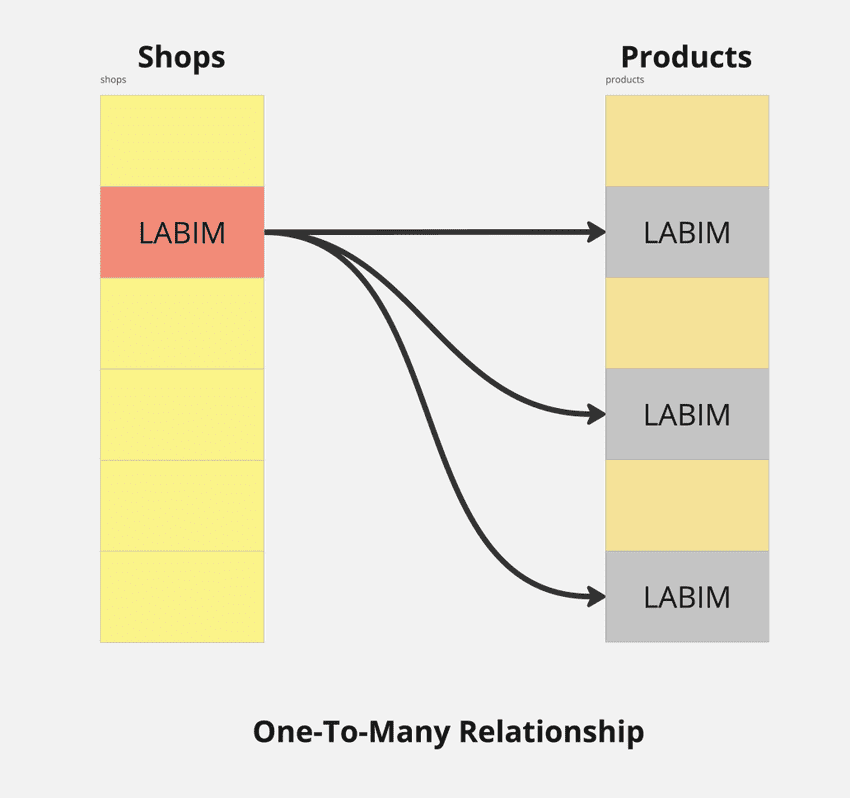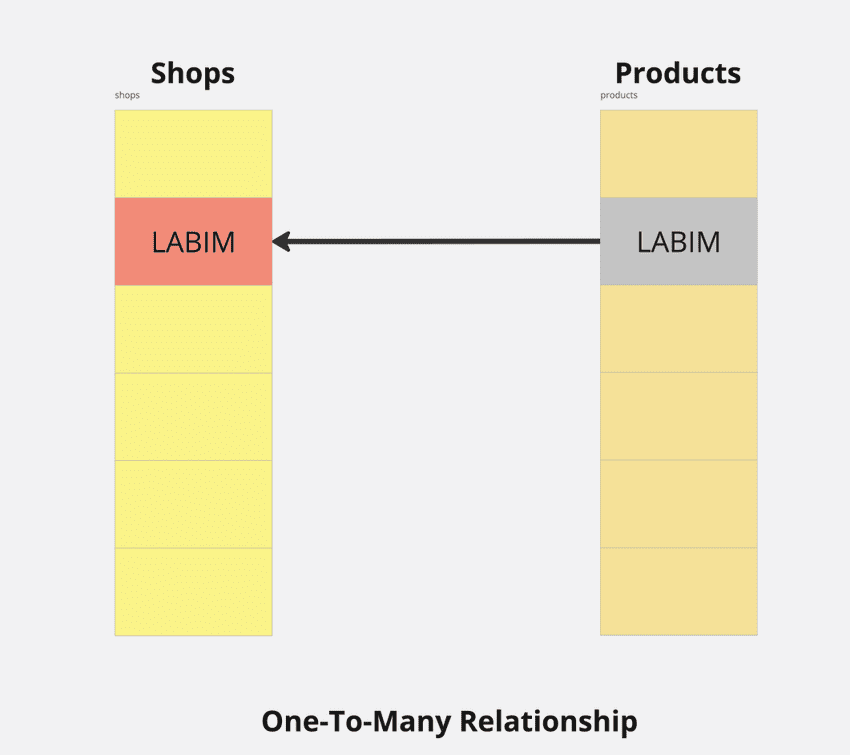In this blog we will learn how to envision a one-to-many relationships between two tables in SQLAlchemy.
A one-to-many (1:N) relationship occurs when, for one instance of entity A, there can be zero, one, or many instances of entity B. Conversely, for one instance of entity B, there exists zero or one instance of entity A.
This is a part of REST APIs with Flask and Python in 2023 Course
To visually represent this relationship, envision entities A and B as generic tables such as Shop and Product. In a one-to-many relationship, a single record in table Shop can be associated with multiple records in Product, while a record in Product can be linked to just one record in table Shop. The following images provides an illustration of a 1:N relationship between Tables Shop and Product, viewed first from the perspective of table Shop and then from the perspective of Product.
- This image illustrates a 1:N relationship between table Shop and Product from the perspective of table Shop, showcasing that one record in table Shop is associated with many records in Product (Shop:Product = 1:N).
- This image provides the relationship from the viewpoint of Product. In this view, one record in Product is linked to one record in table Shop (Product:Shop = 1:1).
The most prevalent type of relationship is the one-to-many relationship, which is commonly found in relational databases. In fact, most databases consist of one-to-one relationships and numerous one-to-many relationships. For instance, a Shop can have multiple Products but each product is associated with a single shop. When dealing with instances of two entities, A and B, a one-to-many relationship exists between two instances (Ai and Bi) if Ai can be linked to zero, one, or more instances of entity B, and Bi can be connected to zero or one instance of entity A.
Other examples of one-to-many relationships include the relationship between a daughter and her biological mother. A woman may have zero, one, or more biological daughters, but a daughter can have only one biological mother.
One-to-Many Relationships using SQLAlchemy
Let's have our ShopModel and ProductModel. Each shop can have multiple products, creating a one-to-many relationship.
from flask_sqlalchemy import SQLAlchemy
db = SQLAlchemy()
class ProductModel(db.Model):
__tablename__ = "products"
id = db.Column(db.Integer, primary_key=True)
name = db.Column(db.String(80), unique=True, nullable=False)
price = db.Column(db.Float(precision=2), unique=False, nullable=False)
shop_id = db.Column(db.Integer, db.ForeignKey('shops.id'), unique=False, nullable=False)
shop = db.relationship("ShopModel", back_populates="products")
class ShopModel(db.Model):
__tablename__ = "shops"
id = db.Column(db.Integer, primary_key=True)
name = db.Column(db.String(80), unique=True, nullable=False)
products = db.relationship('ProductModel', back_populates='shop', lazy='dynamic')
What is lazy="dynamic"?
Here's how you can define these models with lazy="dynamic". In this example:
-
Each
ShopModelhas a one-to-many relationship withProductModel. A shop can have multiple products, but each product belongs to only one shop. -
We've added the
lazy='dynamic'option to theproductsrelationship in theShopModelmodel. This means that when you accessshops.products, you get a query object rather than immediately loading all related products.
To obtain a list of ProductModel objects, representing all products associated with a specific ShopModel instance, you can use the following approach:
shop.products.all()shop.products.filter_by(name=="Rice").first()Learn More
- Flask and SQLAlchemy: Better Data Management
- Beginner's Guide to HTTP Methods and Status Codes
- What is a Docker container?
Please let me know if there's anything else I can add or if there's any way to improve the post. Also, leave a comment if you have any feedback or suggestions.


Discussions